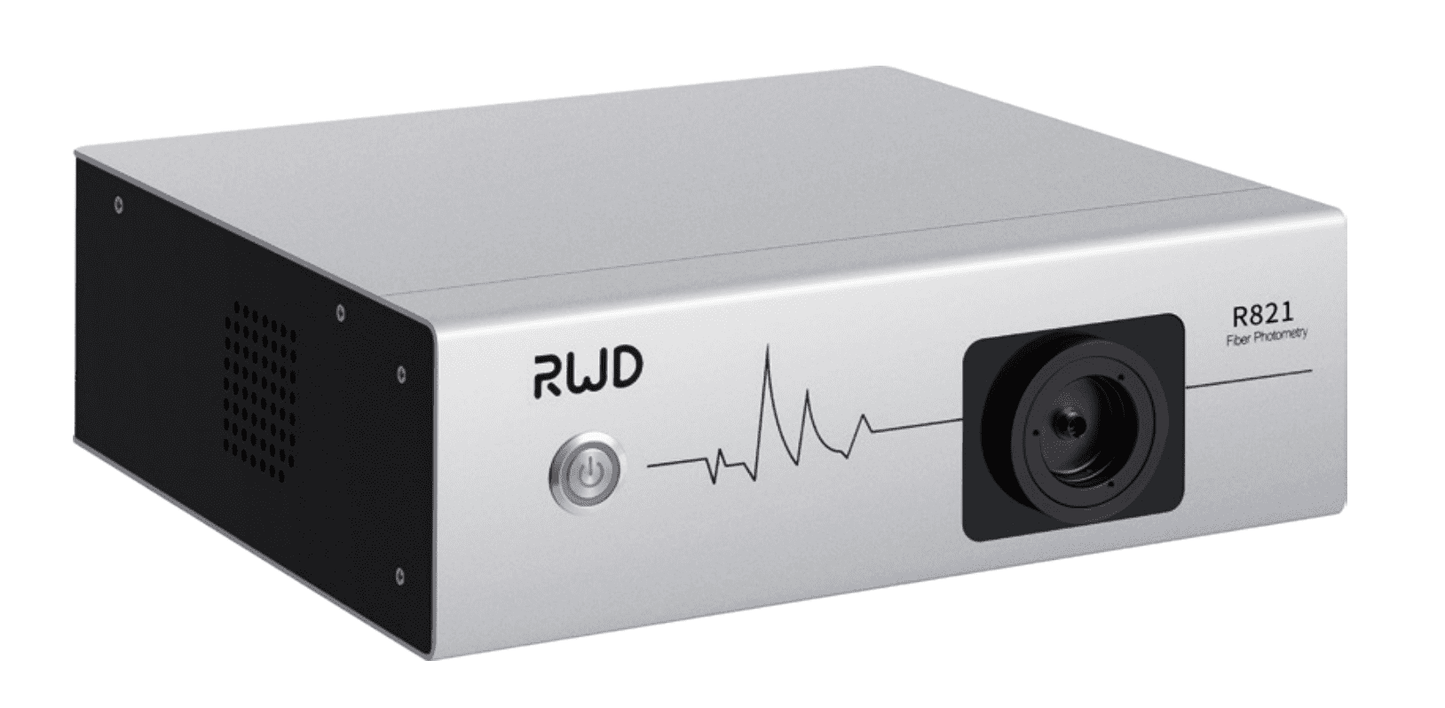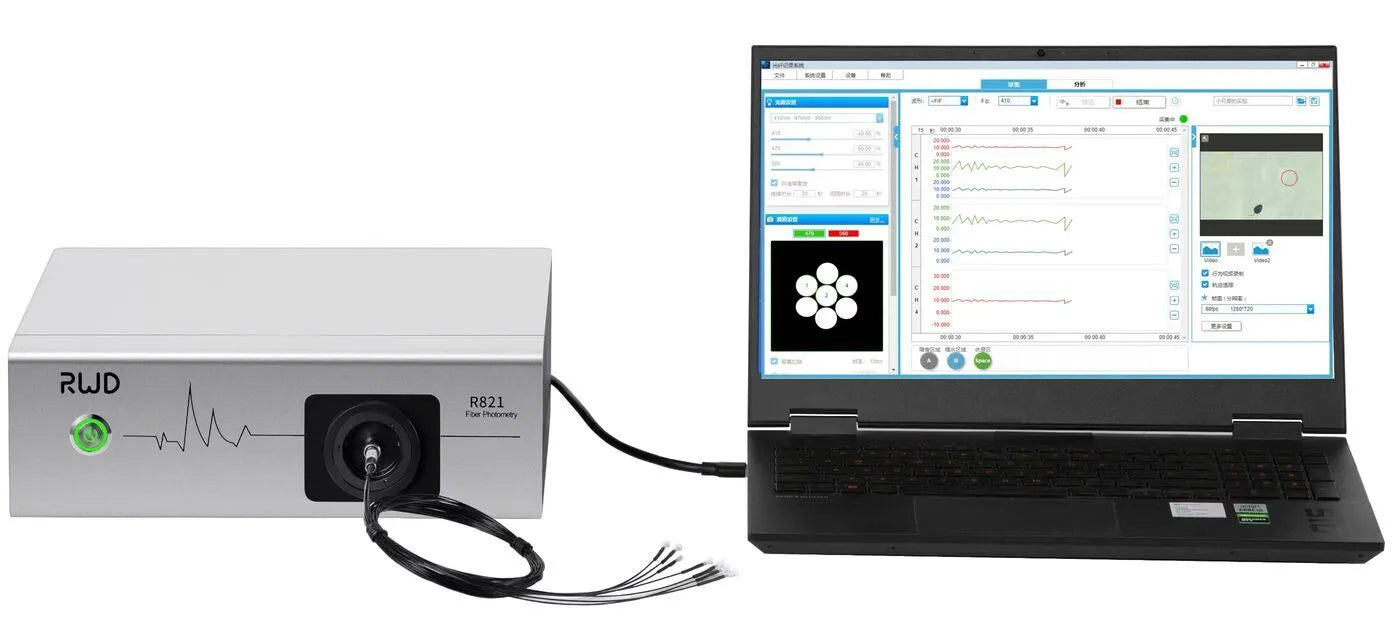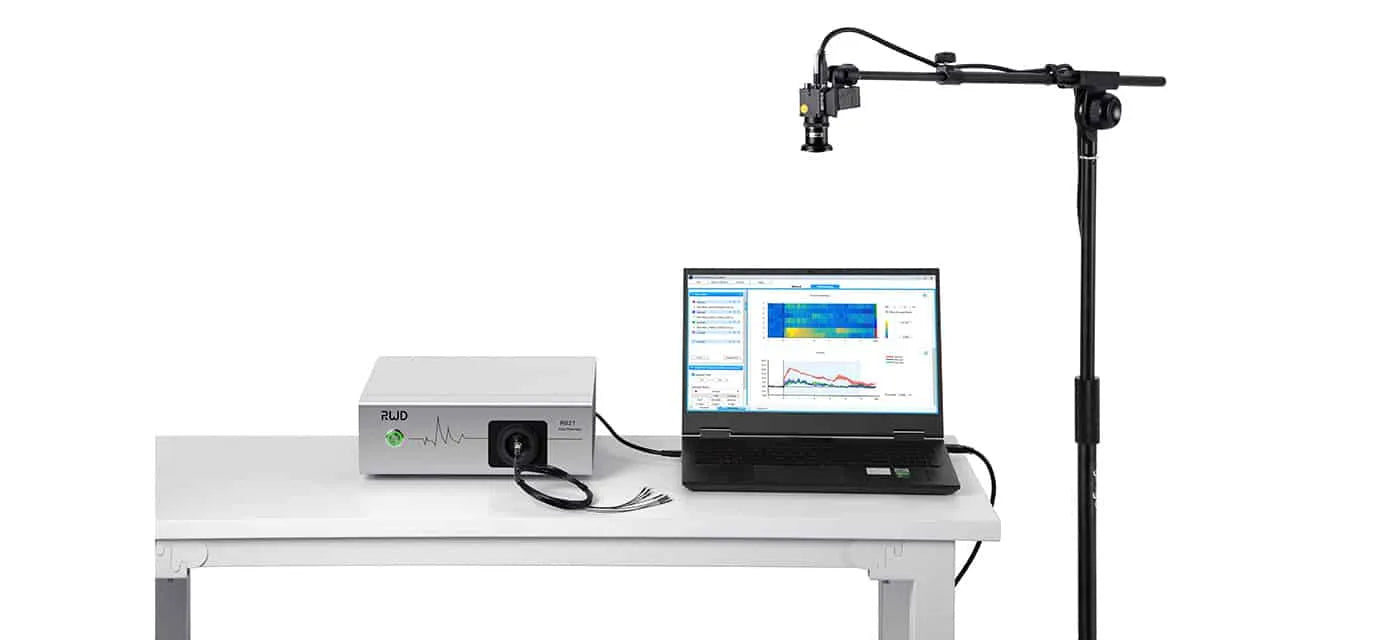Optical Fiber Patch Cables
$24.00–$165.00

Expert assistance. Anytime. Anywhere.

24/7 ordering with stable, efficient logistics.

Certified products, high-performance solutions.

Full product range, Streamlined purchasing.



FR-21(R821) tricolor multichannel fiber photometry system is compatible with optoelectronics equipment. It has different wavelengths of excited light, 410nm, 470nm or 560nm, of which 410 is used to acquire reference signal and eliminate noise. The system can record signal of green fluorescence indicator like GCaMP and dLight or neurotransmitter probe and red fluorescence indicator like RCaMP, jrGECO1a or neurotransmitter probe.
And also it can be applied to record the neural signal for 9 sites at the same time.
The fiber photometry system records changes in the fluorescence intensity of neurons in a specific brain area to reflect neuronal population activity. In the study of neural circuits, the fiber photometry system can perform long-term stable monitoring of the neurons of freely moving animals, and explore the correlation between neural activity and animal behavior.


Stable Data Acquisition

Fluorescence Comparison
One-click Graphs:Including fluorescence heatmaps, curve graphs, animal trajectory graphs, etc
Signal Acquisition Sensitivity:Meets the need for weak signal detection at the picowatt level (axons/glia)
Professional Data Analysis:Comprehensive data analysis, with a complete pre-processing process, and event refinement analysis, support for multi-dimensional results and format output
High Integration:The whole machine and software integrated design, built-in optogenetic interface, to achieve the same site stimulation and recording
Stable Performance:Over 500 hours of stable acquisition to meet the needs of sleep and other experiments
Strong Expansion:With 4 input and 4 output digital interface and excitation light combination mode, support for up to 9-channel acquisition
Download FR-21(R821) Tricolor Multichannel Fiber Photometry System Brochure
Using fiber photometry to detect the activity of SuM-DG neuronal projections in novel environments


Li, Ya-Dong et al. “Hypothalamic modulation of adult hippocampal neurogenesis in mice confers activity-dependent regulation of memory and anxiety-like behavior.” Nature neuroscience vol. 25,5 (2022): 630-645. doi:10.1038/s41593-022-01065-x
Demand of the Product:We recorded calcium dynamics in DG-projecting SuM neurons by fiber photometry. In vivo recordings were carried out in an open-top HC (21.6×17.8×12.7 cm3) or EE (45×25× 20 cm3) containing toys, colorful balls, domes or tunnels and food, for 10min.
Journal: Nature Neuroscience
Animal: Mice
Virus Injection Site: SuM
Research Highlight: This study identifies a key hypothalamic circuit that couples novelty signals to the production and maturation of ABNs, and highlights the activity-dependent contribution of circuit-modified ABNs in behavioral regulation.
Research Method: Stereotaxic surgery、Fiber photometry、In vivo multichannel recording、Optogenetic/Chemogenetic stimulation、Immunohistochemistry、Patch-clamp、Contextual fear-conditioning behavior、NPR task、Normal behavior test (open field/forced swimming/zero maze).
Using fiber photometry to detect the activity of SuM-DG neuronal projections in AD mice


Li, Ya-Dong et al. “Activation of hypothalamic-enhanced adult-born neurons restores cognitive and affective function in Alzheimer's disease.” Cell stem cell vol. 30,4 (2023): 415-432.e6. doi:10.1016/j.stem.2023.02.006
Demand of the Product:We performed fiber photometry to record calcium activity of CA3 and CA1 pyramidal neurons labeled with GCaMP6f upon chemogenetic activation of SuM-enhanced ABNs by intraperitoneal CNO injection.
Journal: Cell Stem Cell
Animal: Mice
Virus Injection Site: SuM、CA3、CA1
Research Highlight: This study establishes the activity-dependent contribution of SuM-enhanced ABNs in modulating AD-related deficits and informs signaling mechanisms mediated by the activation of SuM-enhanced ABNs.
Research Method:
Stereotaxic surgery、Fiber photometry、Optogenetic/Chemogenetic stimulation、Immunohistochemistry、Patch-clamp、Mass spectrometry analysis、Contextual fear-conditioning behavior、NPR task、Normal behavior test (open field/forced swimming/zero maze).
Using fiber photometry to detect dynamic changes in calcium signaling in LDT (GABA) neurons of awake mice under different sensory stimuli

Du, Yonglan et al. “Dopamine release and negative valence gated by inhibitory neurons in the laterodorsal tegmental nucleus.” Neuron vol. 111,19 (2023): 3102-3118.e7. doi:10.1016/j.neuron.2023.06.021
Demand of the Product:we utilized in vivo fiber photometry to measure calcium (Ca2+) dynamics of LDTGABA neurons in awake behaving mice, during the presentation of diverse sensory stimuli. And we combine optogenetic modulation of excitation/inhibition in LDTGABA neurons with fiber photometry of DA release in NAcLat
Journal: Neuron
Animal: Mice
Virus Injection Site: LDT(Laterodorsal Tegmental Nucleus)
Research Highlight: This study finds two separate populations of LDT(GABA) neurons are involved in the regulation of distinct behavioral reactions to unpleasant stimuli
Research Method: Stereotaxic surgery、Tracing、Fiber photometry、Optogenetic stimulation、Two-photon、Miniscope、Patch-clamp recording、Immunohistochemistry、CPP task、Open field、Real-time place preference test、Von Frey test、Hot plate test

